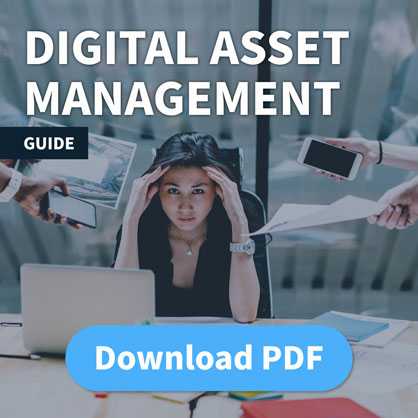The digital revolution has fundamentally transformed the way businesses manage and leverage their digital content. In a time where digital assets such as images, videos, audio files, and documents are crucial to business success, having an effective Digital Asset Management (DAM) system becomes indispensable. However, there are many important aspects to consider when selecting a DAM system to ensure it meets your company’s needs. In this article, we will explore ten essential points to consider when choosing a digital asset management system.
This free guide provides you with the knowledge and tools to securely and effectively manage your digital assets, thus enhancing the efficiency and productivity of your business.
1. Adaptability
A good DAM system should seamlessly integrate with your existing technological infrastructure. Check if the system is compatible with your current systems, such as content management systems or collaboration tools. The adaptability of the DAM system plays a crucial role in the smooth integration and utilization of your digital assets.
2. User-Friendliness
An intuitive user experience is vital to ensure your employees can effectively use the DAM system. Test the platform’s user-friendliness to ensure it is easy to learn and operate. A clear and intuitive user interface saves time and reduces the likelihood of errors.
3. Metadata Management
Effective metadata management is key to making your digital assets easily discoverable. Ensure that the DAM system offers robust metadata management features to categorize, tag, and search your assets. This significantly facilitates and accelerates the search for specific assets.
4. Scalability
When selecting a DAM system, it is important to consider scalability. Your company may grow, and your DAM system requirements may change over time. Ensure that the chosen system offers the ability to effectively scale and manage your digital assets, even as your company expands.
5. Security
The security of your digital assets should be a top priority. Check if the DAM system provides robust security features such as access controls, encryption technologies, and backup options. A reliable DAM system should also have features to prevent data loss and unauthorized access, ensuring the confidentiality and integrity of your assets.
6. Supported File Formats
Ensure that the DAM system supports a wide range of file formats, including common types such as JPEG, PNG, GIF, MP4, PDF, and DOCX. This ensures that you can store and manage all types of digital assets in your system without worrying about compatibility issues.
7. Search and Filtering
Efficient search and filtering capabilities are essential for quickly and accurately finding specific assets. The DAM system should have a powerful search engine that can search both metadata and the content of the digital assets themselves. Filter options such as categories, tags, date ranges, and file types help narrow down the search and easily find the desired assets.
8. Version Control and Approval Processes
When collaborating on digital assets, having clear version control and efficient approval processes is important. Check if the DAM system offers the ability to manage different versions of assets, track changes, and add comments or approvals. This facilitates collaboration and ensures that only approved assets are used.
9. Analytics and Reporting
A good DAM system should provide detailed insights into the usage of your digital assets. Check if the system offers powerful analytics and reporting tools to track data such as downloads, views, and shares. This information helps you evaluate the effectiveness of your digital assets and adjust your marketing and sales strategies accordingly.
10. Customer Support and Training
Finally, it is important to ensure that the DAM system provider offers reliable customer support and training opportunities. Check if the provider offers support channels such as email, phone, or live chat, and if training or educational materials are provided. Good customer support and training opportunities ensure that you can fully leverage the potential of the DAM system and receive assistance when needed.
Conclusion
Choosing a Digital Asset Management system is a significant decision for businesses looking to efficiently manage and leverage their digital assets. By considering the ten points mentioned above, you can ensure that you select a DAM system that meets your specific requirements. From adaptability and user-friendliness to security and supported file formats, each of these criteria plays a crucial role in choosing an effective DAM system. Invest time and resources in carefully evaluating and selecting a system to ensure that your company benefits from a robust and reliable DAM system.
Looking for a better way to manage your digital assets?
Our top-notch digital asset management software can help! Say goodbye to disorganized files and wasted time, and hello to streamlined workflows and easy access to all your important assets. Contact us now to learn more and schedule a demo.





